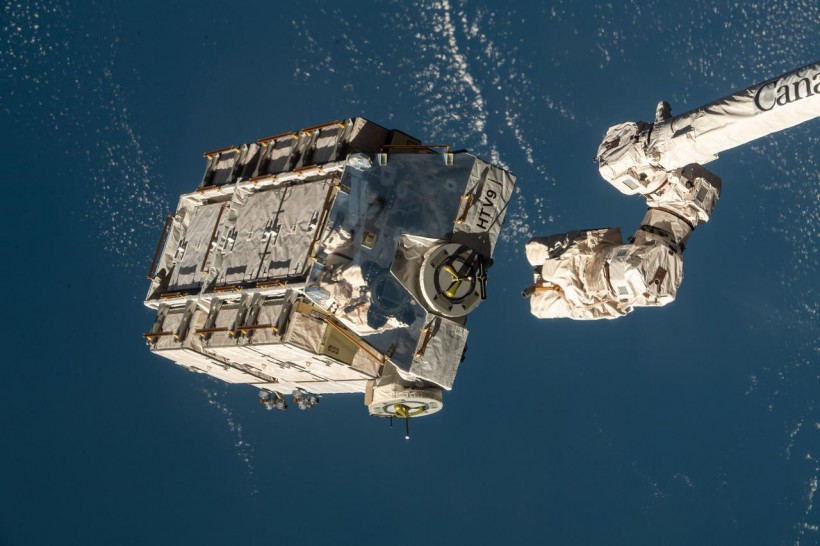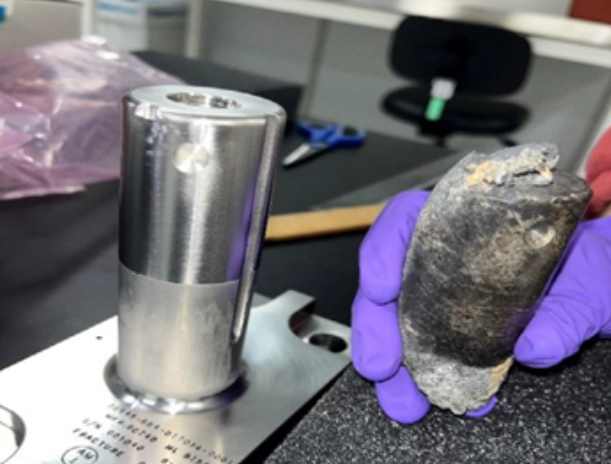Expired batteries from the International Space Station hit a Florida home last March, and NASA has now recovered the piece which reportedly tore through two floors of the man's house.
The released batteries of the Space Station were expected to burn during its re-entry process in the Earth's atmosphere, but a part of the battery survived, one found in Naples, Florida.
NASA Space Station Battery Hit Florida Home After Release

(Photo : NASA)
Back in March 2021, NASA released a cargo pallet weighing about 5,800 pounds that contained aging nickel hydride batteries from the International Space Station.
However, instead of fully disintegrating as it entered the Earth's atmosphere, some parts of it survived, and it tore through a man's home in Naples, Florida which he revealed last March.
NASA conducted an analysis and investigation into the incident, claiming that it re-entered the planet on March 8 and impacted the home. The team regarded it as a stanchion made of the metal alloy Inconel, weighing 1.6 pounds, 4 inches in height, and 1.6 inches in diameter.

(Photo : NASA )
The victim claimed that it tore through the roof and ripped a hole in two floors of the house, with his son almost getting struck by it.
Read Also: Astrobotic's Peregrine Moon Lander is Coming Home, to Burn Up on Earth's Atmosphere
Three Years in the Making, Not Disintegrating
The three-year journey of the 5,800-lb. battery saw it reduced to a 1.6-lb. debris, but it did not fully disintegrate in contrast to NASA's belief that it would fully do so as it returned. Additionally, its remains were meant to go to Fort Myers but ended up 50 miles away in Naples, FL, another unexpected happening during this dumping.
NASA and Its Re-Entry Process
Bringing backspace garbage from orbiting stations, post-rocket launches, or defunct satellites is one way to prevent polluting the orbit. While some survive and are meant to be reused, others are expected to burn and disintegrate.
NASA is no longer new to sending things back to the home planet and expects that most of it will be destroyed, with remaining debris or pieces given a trajectory to unpopulated areas or bodies of water.
Last year, NASA sent the 20-year-old RHESSI satellite back to the planet and expected it to return intact, but it was sent on its way to where it would have a "low" chance of hitting people, other living organisms, or homes.
Early 2023 also saw another NASA satellite being sent back to the planet, particularly with the defunct ERBS, which crashed back on Jan. 8. In this case, it was expected to mostly burn as it went through the re-entry process, with only several pieces expected to survive.
While this is not the first rodeo of NASA regarding sending back defunct or unwanted space materials, it certainly presented harm to a person, especially as it tore through the roof and two floors of a house in Florida. NASA has already finished its analysis of the space garbage but did not detail what to do for the affected family in Naples.
Related Article: Europe's ERS-2 Satellite is Crash Landing on the Earth this Wednesday-Location Unknown










